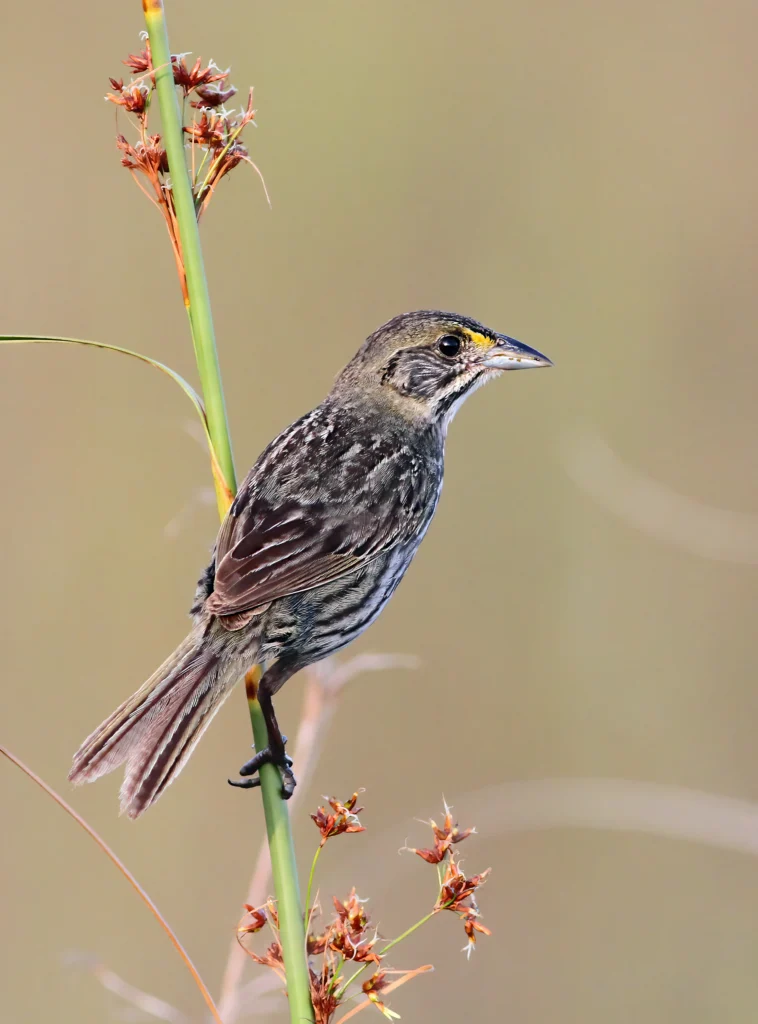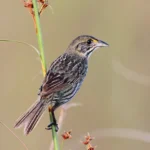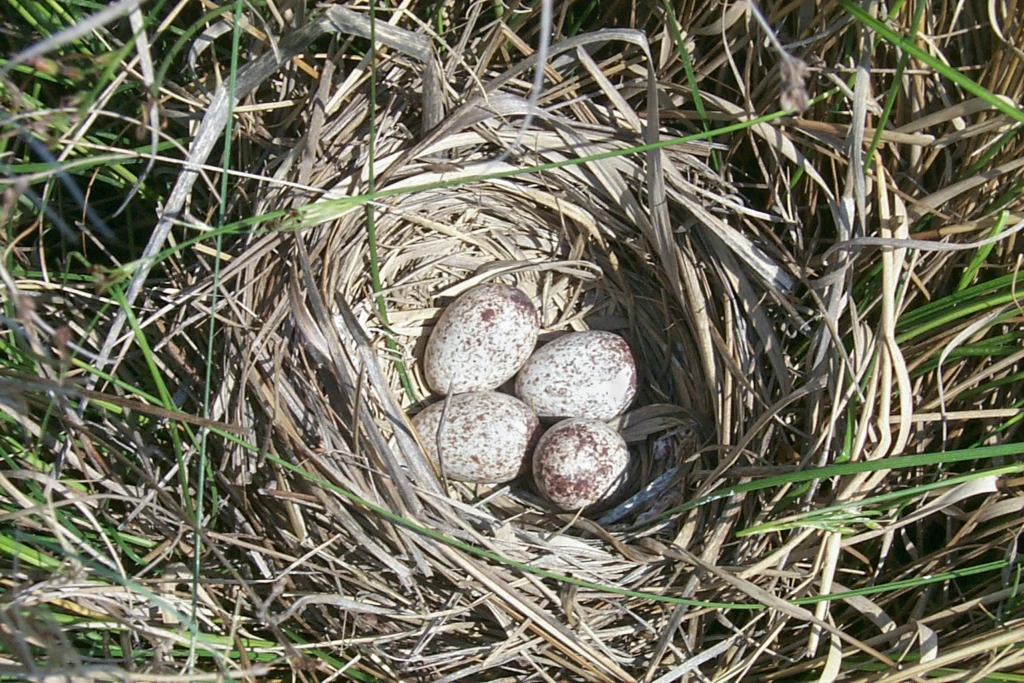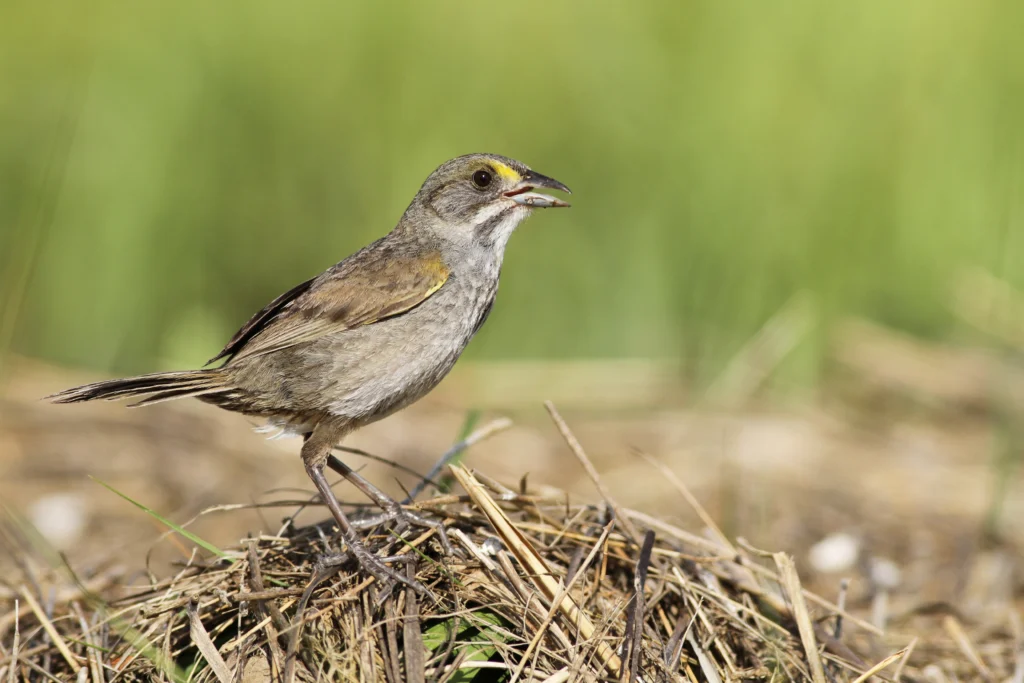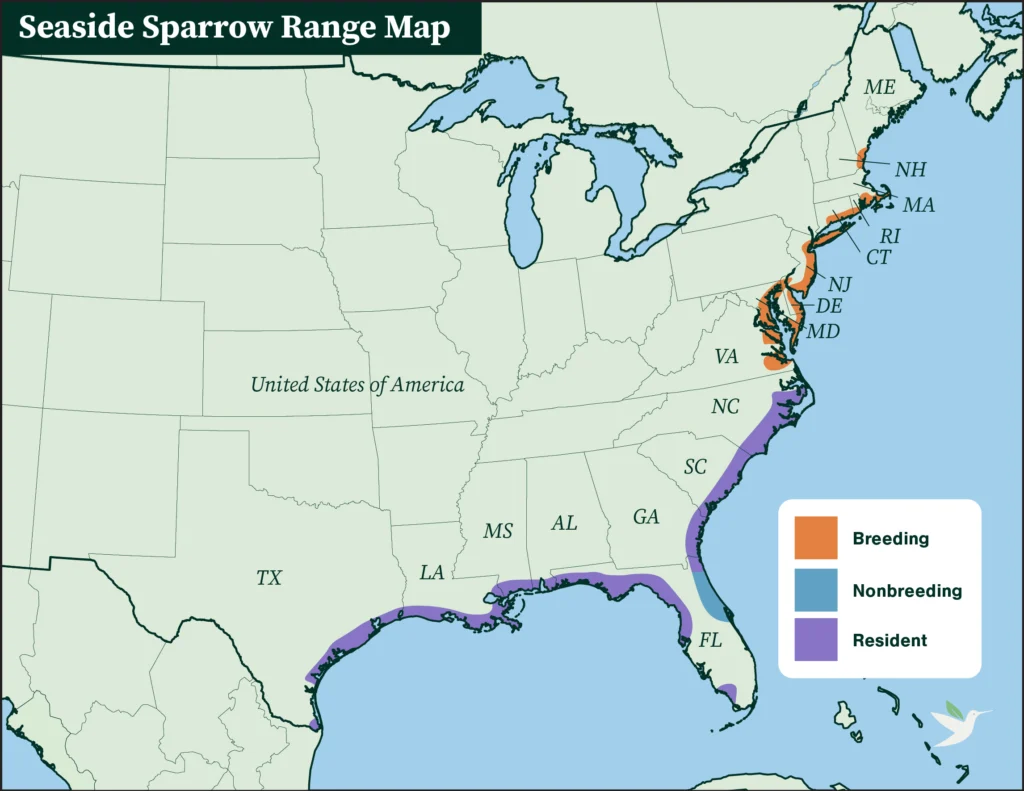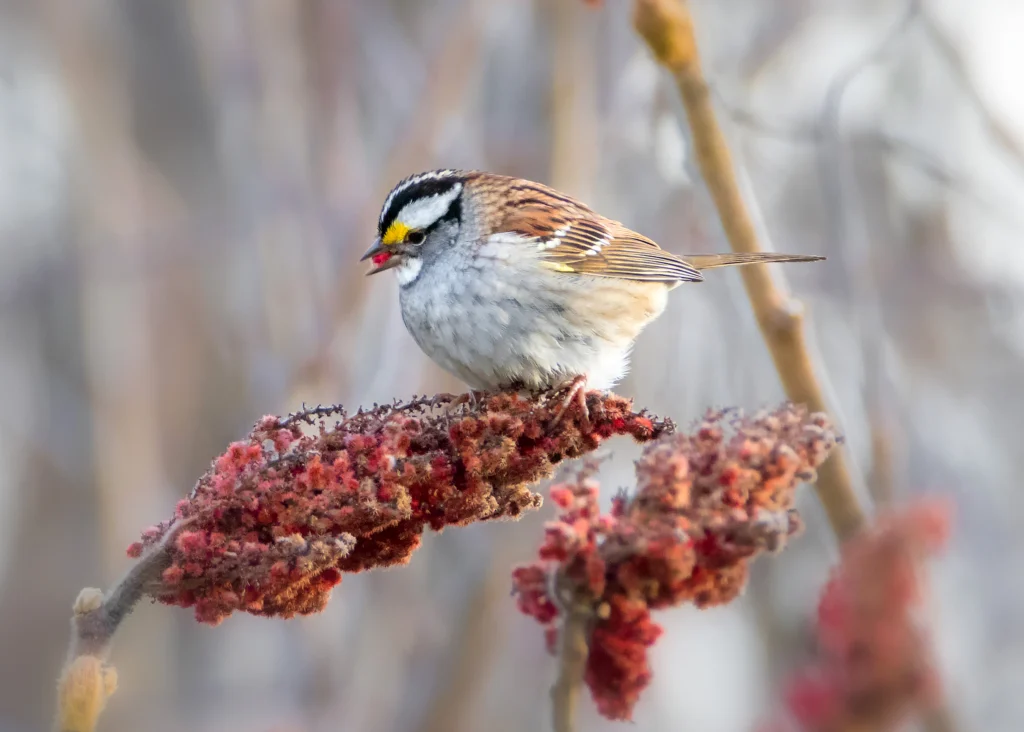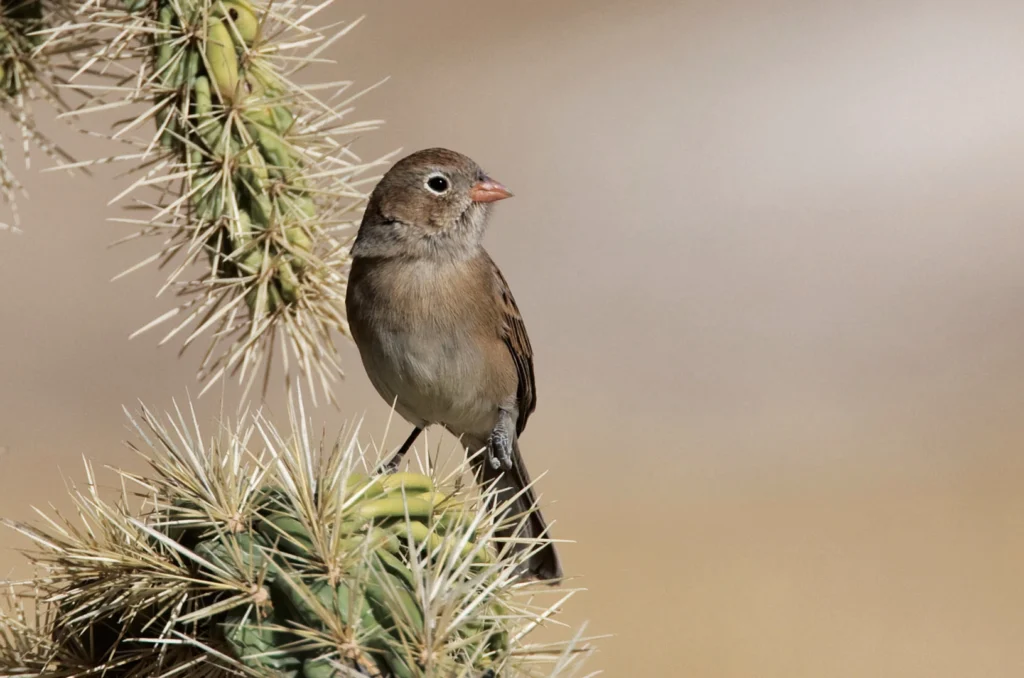The Seaside Sparrow is a large, dark sparrow, well-named for its preferred habitats of salt and brackish marshes. Although it shares habitat with other shoreline-loving sparrows such as the Saltmarsh and Nelson’s Sparrows, it is noticeably bigger and darker. Sometimes called the “Goldilocks Bird,” this sparrow needs a combination of environmental factors that are “just right” to breed successfully.
Ornithologists recognize seven subspecies of Seaside Sparrow, distributed along the U.S. Atlantic Coast south through the Gulf Coast of Texas. Some of these subspecies are endangered, and one is extinct.
The dark-plumaged “Dusky” Seaside Sparrow subspecies was once resident along the Atlantic coast of southern Florida, in the marshes of Merritt Island, and along the St. Johns River. Its small numbers and tiny range made it especially vulnerable to habitat loss caused by accelerated development, mismanaged mosquito control efforts, and road building. By 1979, its population had dwindled to only six males, five of whom were brought into captivity. The last Dusky Seaside Sparrow died in 1987.


